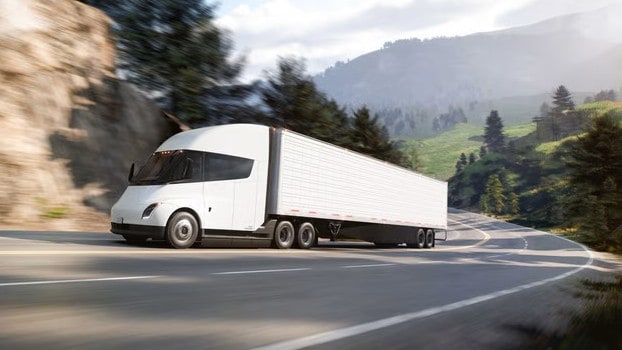This article was originally published on Fool.com. All figures quoted in US dollars unless otherwise stated.
Last week, electric vehicle pioneer Tesla Inc (NASDAQ: TSLA) turned in a third-quarter report that was strong overall, though revenue came in a little lighter than Wall Street had expected.
Revenue grew 56% year over year to a quarterly record of $21.45 billion, driven by a 55% increase in automotive segment revenue, which came in at $18.7 billion. The Street was looking for total revenue of $21.96 billion.
Tesla also set quarterly records for vehicle production and deliveries, which jumped 54% and 42%, respectively, year over year. It also set records for operating profit and free cash flow, among other metrics. Moreover, its adjusted earnings per share (EPS) soared 69% year over year to $1.05, beating the $1.00 analyst consensus estimate.
Earnings releases tell only part of the story. Here are two key things management shared on Tesla's Q3 earnings call that investors should know.
Aiming to produce 50,000 Tesla Semi trucks in North America in 2024
From CEO Elon Musk's remarks:
So we'll be handing over our first production Tesla Semis to Pepsi on December 1. ... We're tentatively aiming for 50,000 units in 2024 for Tesla Semi in North America. And obviously, we'll expand beyond North America.
The Tesla Semi is an all-electric heavy (Class 8) truck that the company unveiled in 2017. It had originally planned to begin producing this vehicle in 2019, but it pushed the date back so it could focus for some time on manufacturing Model 3 sedans, which have garnered tremendous demand from consumers.
Earlier this month, Musk tweeted that the company had begun producing the Semi and would deliver the first batch to PepsiCo Inc (NASDAQ: PEP) on December 1. He didn't specify in that tweet or on the earnings call how many units would be in the initial delivery. The food and beverage behemoth reportedly reserved 100 Semi trucks soon after Tesla unveiled this vehicle.
On the call, Musk clarified that the Tesla Semi's range of 500 miles was with the cargo and travelling on a level road. Yes, that invites a question about how much cargo weight it can carry and still achieve that 500-mile range.
But regardless of the exact weight, the main point holds that a fully electric heavy truck with a range in the ballpark of 500 miles should garner significant demand. That is, assuming this truck operates well overall and its price is not astronomical.
Energy storage business has the potential to grow 150% to 200% per year
From Musk's remarks:
[To transition to sustainable energy,] you need solar [and] wind with the stationary battery pack to buffer the power so you have 24/7 power. [That's] because the wind doesn't blow all the time and the sun doesn't shine all the time.
We actually see the energy storage business, stationary storage, growing more like 150% to 200% a year, much faster than cars by a lot.
For context, in the third quarter, Tesla's energy generation and storage segment's revenue rose 39% year over year to $1.1 billion, or about 5% of total revenue. By comparison, the core auto segment's revenue surged 55% year over year.
Growth in the energy generation and storage segment was driven by a 66% increase in energy storage capacity deployments to a record 2.1 gigawatt hours (GWh).
However, it's important to note that demand for Tesla's energy storage products has been greater than the company's ability to produce them. The global semiconductor shortage has hurt its energy storage business more than its auto business, according to Tesla's Q3 shareholder letter.
On the call, Tesla CFO Zachary Kirkhorn said that the energy segment achieved its highest gross profit ever in the third quarter, driven primarily by record volumes of the Megapack and Powerwall stationary storage products. That metric was $104 million, according to my calculations. This is just 1.9% of Tesla's total Q3 gross profit of $5.38 billion, but at least the energy segment had a gross profit. This has not always been the case.
This article was originally published on Fool.com. All figures quoted in US dollars unless otherwise stated.









